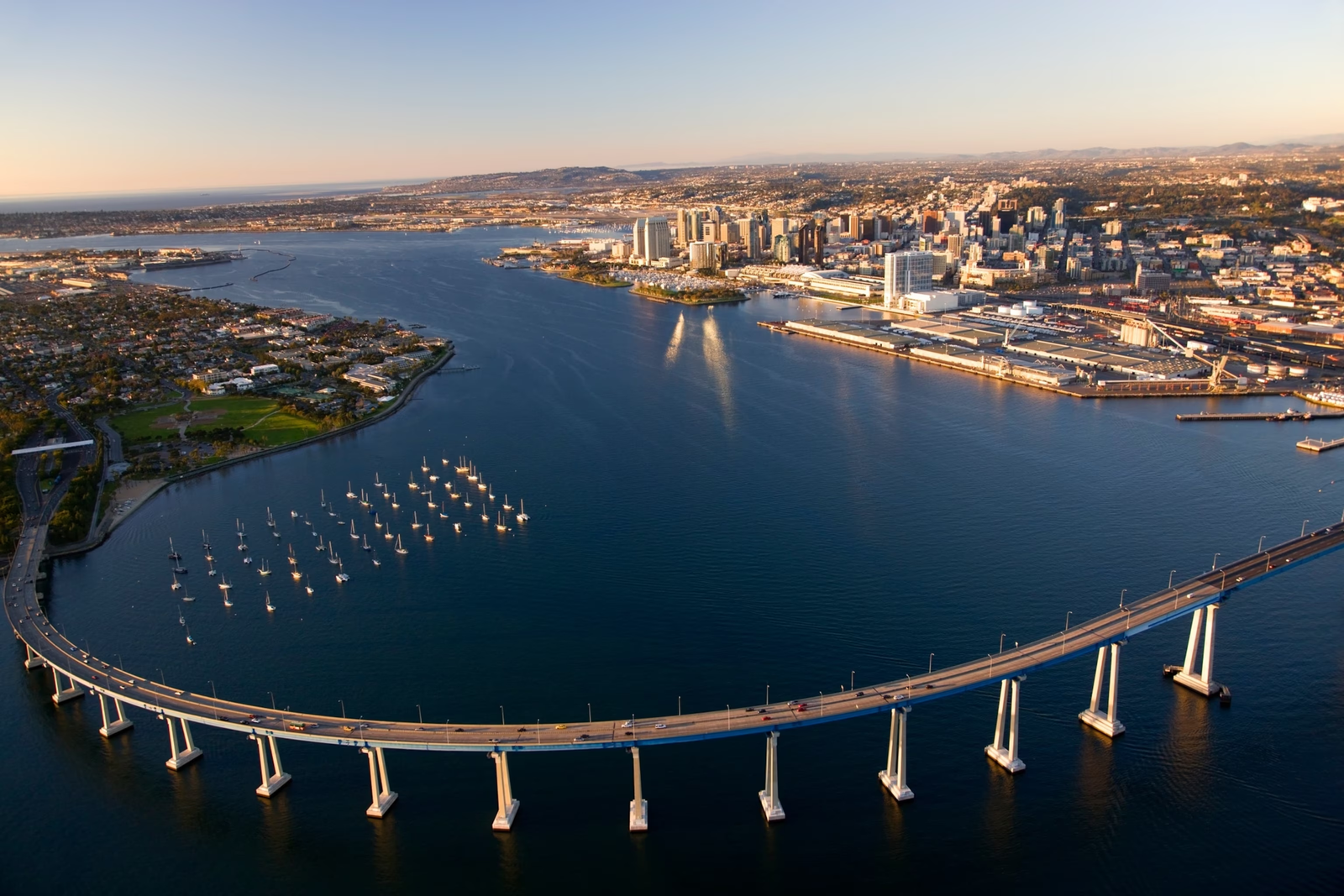| Park Name | Key Features |
|---|---|
| Balboa Park | Museums, gardens, San Diego Zoo |
| Torrey Pines State Natural Reserve | Rare pine trees, ocean views |
| Mission Bay Park | Aquatic playground, water sports |
| Sunset Cliffs Natural Park | Dramatic cliffs, ocean vistas |
| Cabrillo National Monument | Historic site, panoramic views |
| Old Town San Diego State Historic Park | Early San Diego history, cultural sites |
| Cuyamaca Rancho State Park | Wilderness, hiking trails |
| Anza-Borrego Desert State Park | Desert landscapes, wildflowers |
| Mission Trails Regional Park | Natural beauty, historic significance |
| Silver Strand State Beach | Beach activities, scenic views |
| Black’s Beach | Surfing, secluded beach |
| Mount Laguna Recreation Area | Alpine scenery, outdoor recreation |
Balboa Park

Name and Location: Balboa Park is located just north of downtown San Diego, comprising over 1,200 acres filled with gardens, trails, museums, theaters, recreation and the famous San Diego Zoo.
History and Significance: Developed for the 1915 Panama-California Exposition, the lush park provides a cherished public green space housing elaborate Spanish-Renaissance architecture that’s on the National Register of Historic Places.
What to Expect: Visitors explore trails, gardens, museums like the SD Art Museum, cultural venues including the Old Globe theater, dining options and the world-famous San Diego Zoo highlighting wildlife conservation.
Visitor Information: The park grounds are open daily without admission fees aside from certain museums and attractions. Free parking shuttles available from Inspiration Point lot.
Balboa Park is an iconic urban park located in central San Diego. Spread across 1,200 acres, it contains museums, performing arts venues, gardens, trails, and the world-famous San Diego Zoo. The park offers incredible diversity with attractions ranging from the tranquil Japanese Friendship Garden to the architecturally stunning buildings along El Prado. Visitors can easily spend an entire day wandering the grounds, discovering new sights around every corner. The variety of cultural institutions, public artworks, and carefully curated gardens makes Balboa Park one of the top attractions in all of San Diego.
Torrey Pines State Natural Reserve
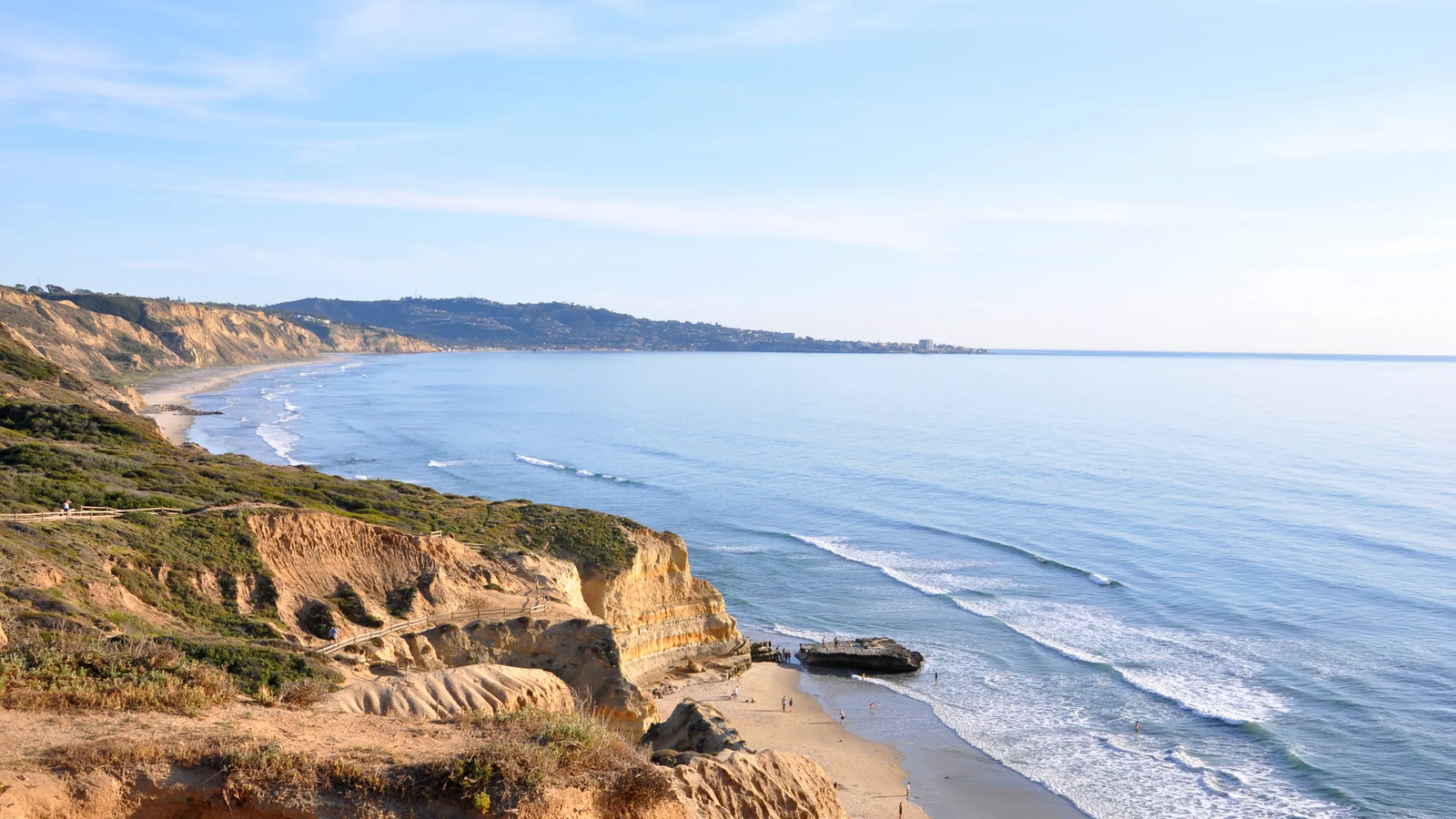
Name and Location: Torrey Pines State Natural Reserve sits along the Pacific coast north of La Jolla, protecting over 2,000 acres of rare coastal pine and Torrey pine forests, lagoons and scenic trails overlooking the ocean.
History and Significance: Containing one of the rarest pine tree species in North America, Torrey Pines preserves unique plant biodiversity vulnerable to extinction in its natural setting, allowing visitors to admire sweeping ocean vistas from sandstone cliffs.
What to Expect: Hikers admire wild Torrey pines and coastal views along 8 miles of trails like the Guy Fleming Trail and Beach Trail loop, which leads down to Torrey Pines State Beach below. Guided nature walks also offered.
Visitor Information: Open daily 8am-sunset. Small parking fee applies. Visitor center offers maps and information to navigate the trails, beach access and grounds through fragile habitats.
Perched dramatically above the Pacific Ocean, Torrey Pines State Natural Reserve offers one of the most spectacular park settings in San Diego. The reserve protects nearly 1,500 acres of rare coastal habitat, home to the Torrey pine tree, found only here and on Santa Rosa Island. Miles of hiking trails wind through sandy ravines and lead to breathtaking ocean vistas. The Guy Fleming Trail in particular is a must-do for incredible coastal views. Whether you’re admiring unique flora and fauna, snapping photos at scenic overlooks, or spotting whales during their yearly migration, Torrey Pines is a quintessential San Diego park experience.
Mission Bay Park
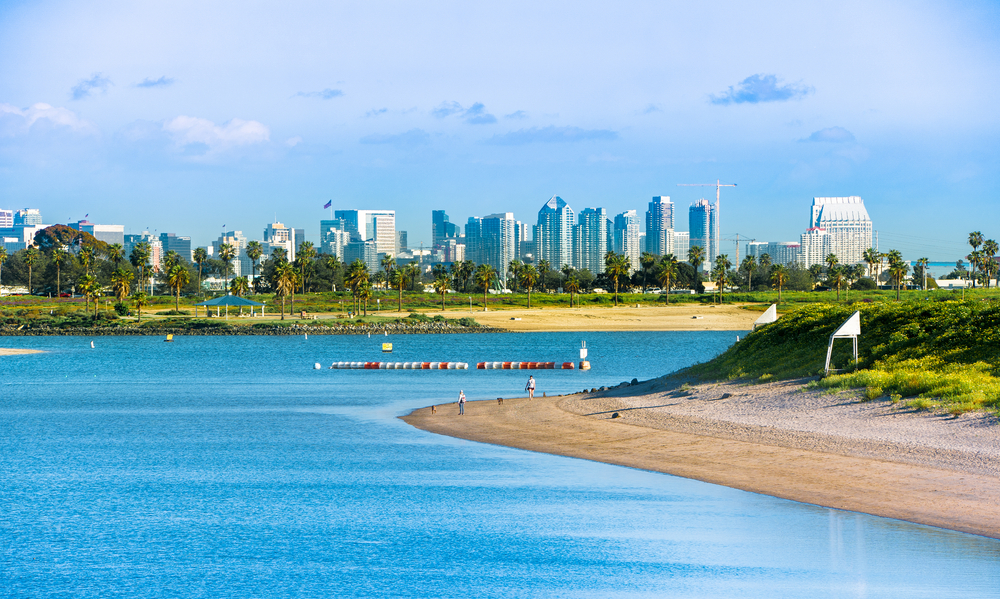
Name and Location: Mission Bay Park comprises 4,600 acres of aquatic playground and green spaces in San Diego, spanning both sides of Mission Bay with access from I-5 and SeaWorld Drive.
History and Significance: Originally a tidal marsh, the navigable bay was modified into a recreational boating/watersports basin in the 1940s with added landscaping, providing key infrastructure supporting San Diego’s tourist economy.
What to Expect: Visitors enjoy beaches,19 miles of paths, playgrounds, marinas, volleyball courts, waterskiing, paddleboarding and sailing across the bay’s inlets, coves and islands with nearby hotels, restaurants and shops.
Visitor Information: As San Diego’s largest aquatic park, it’s open daily without entrance fees. Some parking, boat launches and rentals require payment. Easy access by car or San Diego Trolley.
For fun in the sun, no place beats Mission Bay Park. This 4,600 acre aquatic playground encompasses miles of beaches, bayfront parks, playgrounds, picnic areas, sports fields, hiking trails, and protected wetland habitat. Highlights include Fiesta Island with its off-leash dog park, Ski and SeaWorld beaches perfect for building sandcastles, paddle boarding through serene wildlife refuges, or renting kayaks, sailboats and all kinds of watercraft. With its countless land and water activities right next to the ocean, Mission Bay Park sums up the classic Southern California lifestyle.
Sunset Cliffs Natural Park
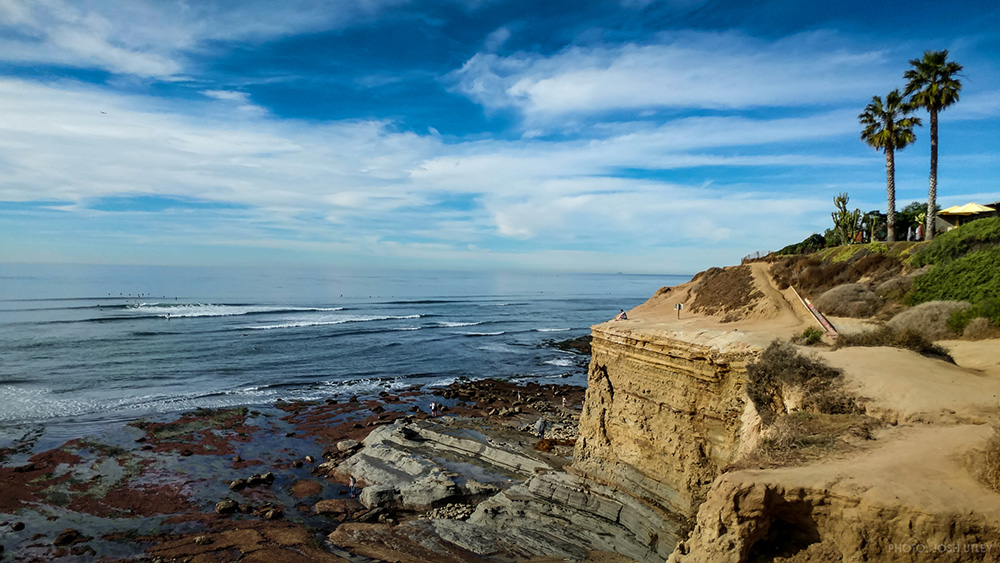
Name and Location: Sunset Cliffs Natural Park encompasses 68 acres of coastal hillside parks and beaches in San Diego’s Ocean Beach neighborhood, set along dramatic sandstone bluffs fronting the Pacific Ocean.
History and Significance: Saved from private development in 2005, it offers some of San Diego’s most spectacular coastal vistas and best surf breaks across arcing beaches dotted with tide pools abundant with marine life.
What to Expect: Hikers amble along cliffside paths overlooking secluded coves, inlets and ocean views. Beach access leads to popular surf spots like Luscomb’s and Garbage Beach up against the eroding golden bluffs.
Visitor Information: The park is open daily without fees, although roadside parking is limited. Respect cliff edges and mind posted signs. Beach access varies by tide/surf conditions. Exercise caution.
Stretching for over a mile atop dramatic sea cliffs, Sunset Cliffs Natural Park lives up to its name. Surfers flock to the waves below while hikers traverse the network of hillside trails leading to spectacular ocean vistas. At low tide, explore the fascinating tide pools formed in rocky coves along the shoreline. Grab a view of the legendary sunsets that bathe the cliffs in brilliant orange and red hues as the sun dips below the horizon. Whether you visit at dawn, midday or dusk, Sunset Cliffs Natural Park captures the natural beauty of San Diego’s coastline like nowhere else.
Cabrillo National Monument
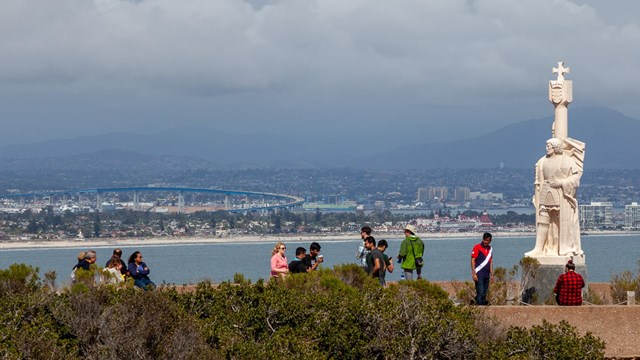
Name and Location: Cabrillo National Monument resides on the southern tip of the Point Loma Peninsula in San Diego, set on a high hilltop overlooking the Pacific Ocean and San Diego Bay.
History and Significance: Commemorating Juan Rodriguez Cabrillo’s 1542 voyage, it protects the Old Point Loma Lighthouse, tidepools and WWII defenses alongside the fully restored Cabrillo Monument statue and sculpture garden honoring his exploration.
What to Expect: Visitors hike scenic trails, tour the Old Point Loma Lighthouse, glimpse the Monument statue, explore WWII fortifications, spot whales in season and visit the exhibit-filled Visitor Center.
Visitor Information: The park grounds, tidepools and Visitor Center are open daily aside from major holidays. Entry costs $25 per vehicle. Timed entry tickets help manage capacity limits.
Combining history, wildlife watching and panoramic views, Cabrillo National Monument makes for an unforgettable park experience. Standing on the windswept cliffs high above the Pacific, imagine Portuguese explorer Juan Rodriguez Cabrillo catching his first glimpse of San Diego Bay back in 1542. The old Point Loma Lighthouse and military fortifications transport you back to San Diego’s early frontier era. Every winter, gray whales migrate right past the monument’s lookouts. On clear days, views stretch across the bay to downtown and far south across the Mexican border. The glimpse into San Diego’s place in history coupled with the epic seascapes guarantee a memorable visit.
Old Town San Diego State Historic Park
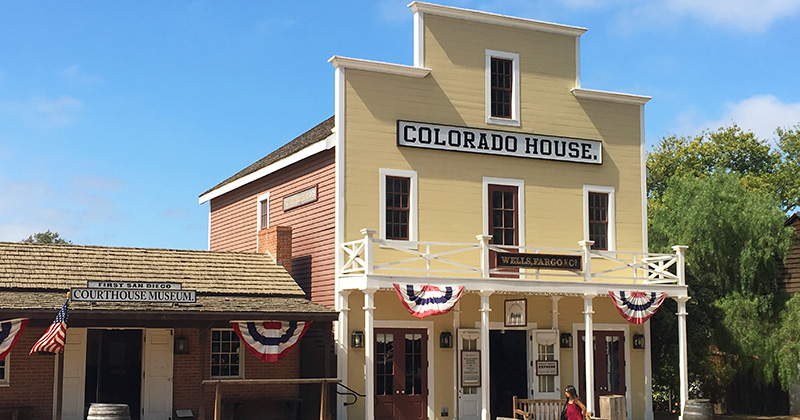
Name and Location: Old Town San Diego State Historic Park in Mission Valley preserves early 19th century Mexican and Spanish settlement buildings, shops and restaurants showcasing San Diego’s multi-cultural roots.
History and Significance: As the birthplace of California’s first Spanish occupation with settlement origins around 1820, Old Town allows visitors to experience historic San Diego, filled with reconstructed adobe homes, churches and museums.
What to Expect: Guests browse shops and galleries housed inside original adobe structures, visit museums detailing San Diego early history, dine in Mexican cantinas and take part living history demonstrations around the plaza.
Visitor Information: Free general admission. Historical sites like museums have entry fees. The site can be accessed from San Diego by car, taxi or metro Transit Route 10 bus during open hours.
For a journey into early San Diego history, visit Old Town San Diego State Historic Park. Walking the historic district’s quaint, restored buildings and quiet, tree-lined plazas provides a vivid glimpse into life during the early 1800s. Peruse early California history in the park museum or check out preserved adobes once inhabited by prominent settlers and government officials. Have a bite in one of the Mexican restaurants and shops lining the district, browse authentic Mexican imports, or observe local artisans crafting pottery, leather goods and more. With its pedestrian-friendly plazas and historic surroundings, Old Town lets visitors experience a bygone era of San Diego’s past.
Cuyamaca Rancho State Park
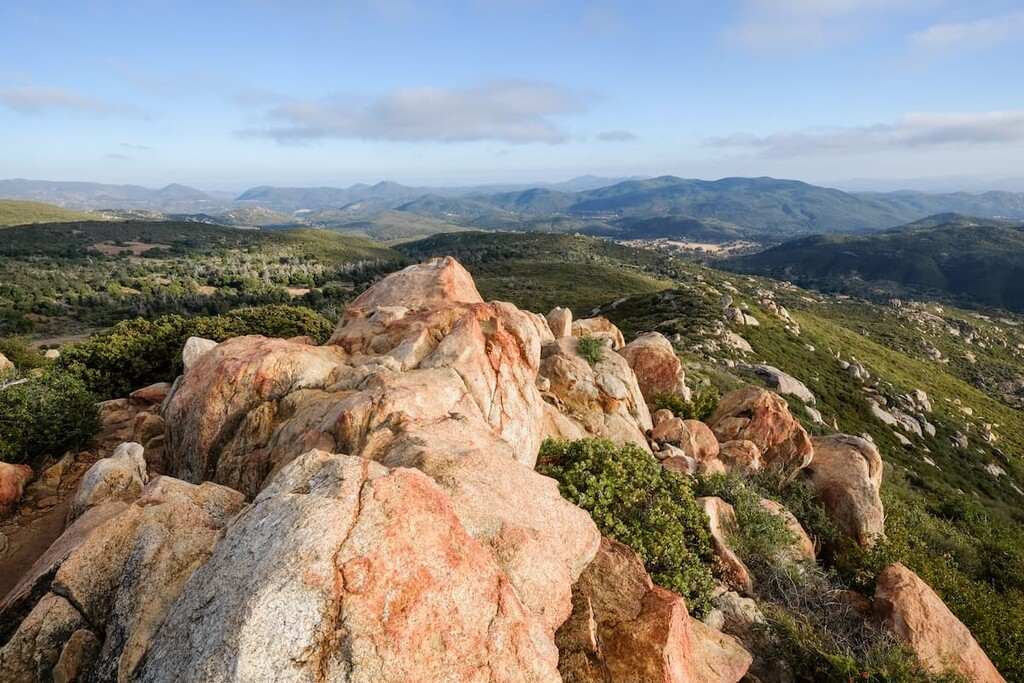
Name and Location: Cuyamaca Rancho State Park comprises 26,000 acres of woodlands an hour east from San Diego in the Peninsular Ranges between Julian and Ramona, accessible from CA-79 South.
History and Significance: Encompassing oak forests with rolling peaks leading to Cuyamaca Peak, native flora and fauna thrive across grasslands, creeks and pine-scented glades with 60 miles of horse/hiking trails including the Pacific Crest Trail.
What to Expect: Outdoor enthusiasts traverse the trail system by foot, bike or horseback admiring wildflower fields, Lake Cuyamaca for fishing and boating opportunities, campsites and the historic 1889 Stonewall Mine ruins.
Visitor Information: The park is open daily sunrise to sunset. A $30 daily vehicle permit or annual pass provides entry with a $15 fee for camping. Ranger-guided hikes offered seasonally.
An oasis amidst arid mountains and high desert, Cuyamaca Rancho State Park protects over 25,000 acres east of San Diego. Along cold mountain streams lined with oak and pine, discover remnants of historic gold mining operations. Hundreds of miles of hiking trails lead to mountain peaks, open meadows awash in wildflowers, and the lush palm groves the park is named for. If you’re lucky you might spot bald eagles, golden eagles, deer, coyotes, bobcats and other wildlife native to this diverse habitat. Whether you’re pitching a tent at the campground, riding horses through the backcountry or embarking on a challenging summit hike, Cuyamaca Rancho State Park entices outdoor enthusiasts year-round.
Anza-Borrego Desert State Park
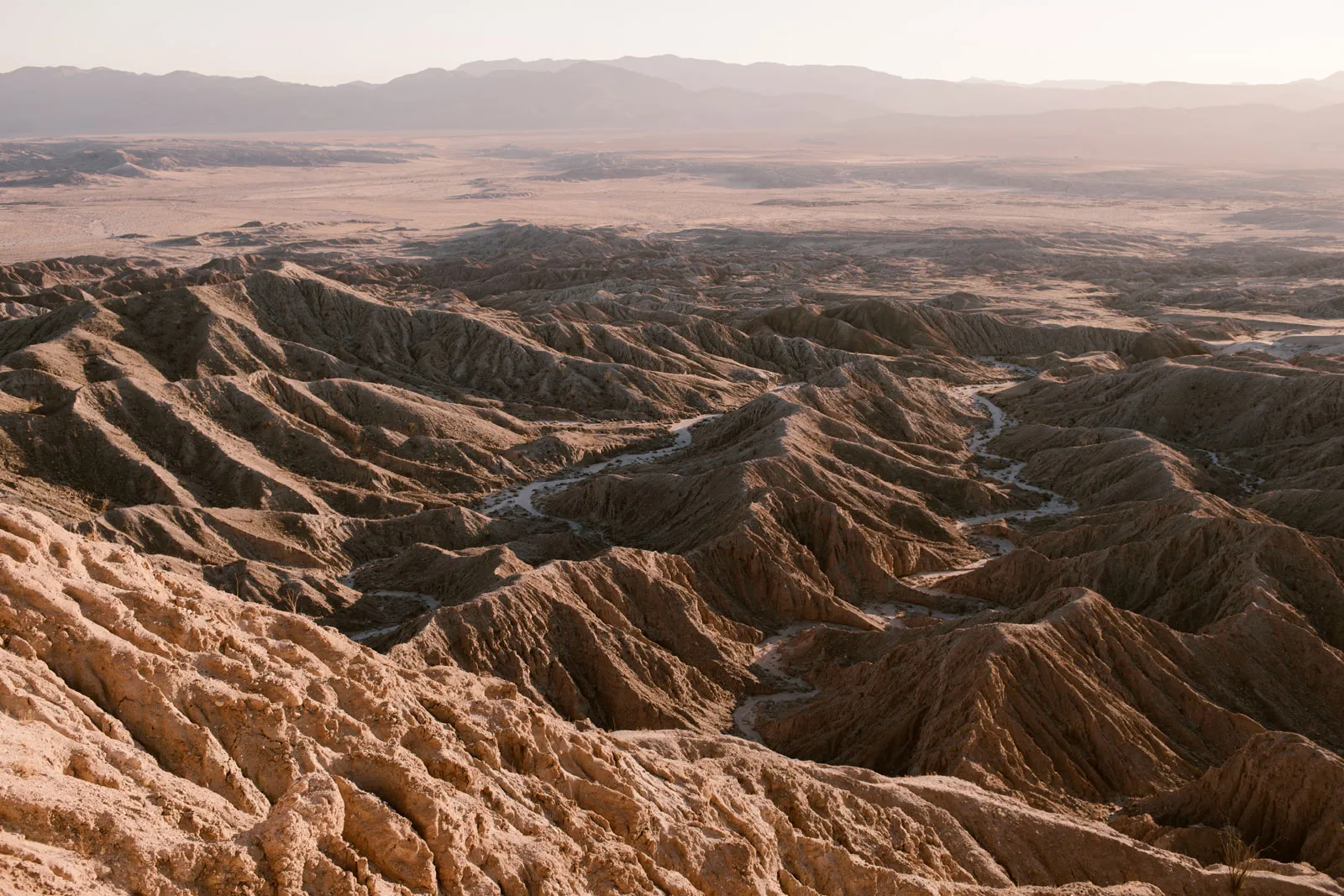
Name and Location: Anza-Borrego Desert State Park, accessed by CA-22 E and CA-S2 N, protects 600,000 acres of desert vistas making it the largest state park in California.
History and Significance: Encompassing a mix of desert canyons, dry lakebeds and sandy wastelands ringed by towering mountains, an abundance of desert wildlife and flora flourishes in the arid terrain first inhabited by Native Kumeyaay people.
What to Expect: Adventures include hiking palm grove oases, viewing Native American petroglyphs, stargazing, pinion pine treks in cooler months, observing seasonal wildflower blooms and birdwatching for roadrunners, hawks and hummingbirds.
Visitor Information: The park is open daily 24 hours for free individual access. Some areas require high-clearance vehicles. Visitor Center offers backcountry maps, guides and camping passes.
For a true desert wilderness experience in San Diego, venture inland to stunning Anza-Borrego Desert State Park. Encompassing over 600,000 acres, it displays the full diversity of the Colorado Desert ecosystem. Marvel at otherworldly desert landscapes carved by ancestral waters. Discover hidden palm oases and lush canyons that contrast vividly with the dry, rocky hillsides and sand flats. Hit the trails to access backcountry 4×4 roads leading deep into this remote region. Come springtime, colorful desert wildflowers bloom vibrantly amidst the arid beauty. With its endless horizons and star-filled night skies, Anza-Borrego transports all who enter to the dynamic heart of the desert.
Mission Trails Regional Park

Name and Location: Mission Trails Regional Park spans over 5,800 acres of San Diego River habitat and rugged terrain in San Diego, accessed from CA-52 W and Mast Blvd.
History and Significance: Protecting a variety of ecosystems, geology and Native history across its trails and zones, the park provides a touchstone to San Diego’s natural heritage through its habitats and scenic landscapes less than 15 minutes from downtown.
What to Expect: Outdoor enthusiasts enjoy over 40 miles of hiking, mountain biking and equestrian trails of varying difficulties overlooking hillside vistas alongside fishing and boating access to two small lakes within the park.
Visitor Information: The park is open daily sunrise to sunset accessed through multiple signed entry points. No entrance fees. Some facilities like Visitor Center available seasonally.
Offering San Diego’s best blend of natural beauty and historical significance, Mission Trails Regional Park showcases iconic Southern California landscapes. Oak and chaparral cloaked hillsides give way to verdant meadows and sycamore lined streams. Follow the trail to the summit of 1,591 ft Cowles Mountain, the highest point in the city, for panoramic views across San Diego. Learn about local history at the Visitor Center before trekking to the Old Mission Dam built in 1816. Count species of birds and wildlife inhabiting this diverse habitat located impressively close to downtown. With its great hiking, history and scenery, Mission Trails Regional Park represents the very best of San Diego.
Silver Strand State Beach
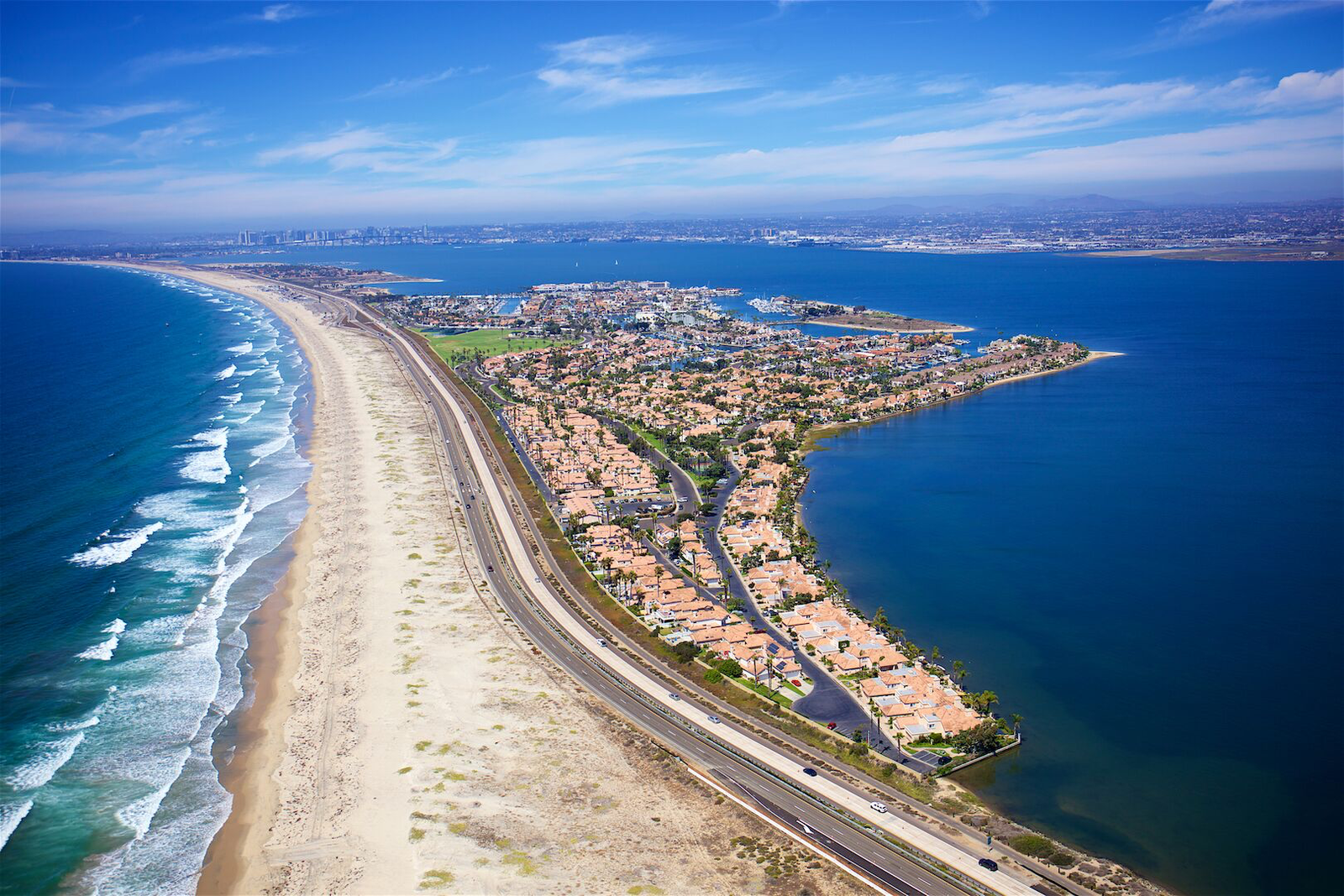
Name and Location: Silver Strand State Beach spans over 2 miles of sand ebbs and tranquil waves across a barrier isthmus channel linking Coronado to Imperial Beach just south of San Diego Bay.
History and Significance: Part of the Silver Strand Training Complex for the Navy SEALs, the popular beach provides swimming, surfing, beach volleyball, lifeguard towers and campgrounds alongside scenic vistas across silver sands backed by elegant Coronado mansions.
What to Expect: Beachgoers swim, bodyboard and wade in the ocean lined by the Silver Strand boardwalk accessing restrooms, showers and picnic areas beside parking lots and lush green spaces with RV sites.
Visitor Information: The beach park is open daily sunrise to sunset. Aside from metered parking, entrance is free. Separate fees apply for camping and RV reservations through Reserve California.
For quintessential San Diego beachgoing, head over the Coronado Bridge to Silver Strand State Beach. As the name suggests, the beach stretches over seven miles between San Diego Bay and the Pacific, creating scenic vistas in both directions. Sunbathe, swim or search for seashells along sandy stretches ideal for families and beachcombing. Rent a beach cruiser and explore north towards the iconic Hotel Del Coronado. Watch cargo ships cruise to-and-from the Port of San Diego across the bay. Picnic while enjoying cooling ocean breezes under the shade of a palm tree. With its mellow atmosphere and family friendly waters, Silver Strand perfectly captures the classic California beach scene.
Black’s Beach
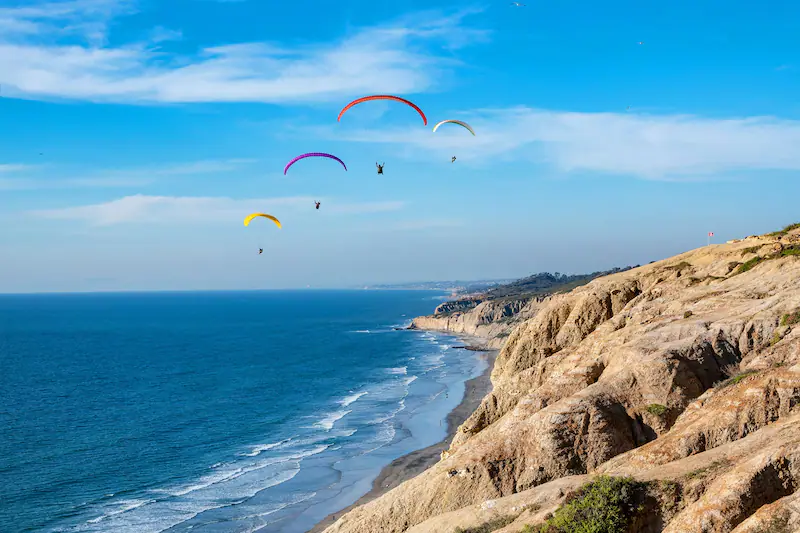
Name and Location: Black’s Beach lies secluded 300+ feet below the Torrey Pines Gliderport just north of La Jolla, situated atop scenic sandstone cliffs encircling the beach below.
History and Significance: Known as the first legal nudist beach in the United States, the unspoiled stretch of shoreline provides a remote enclave for naturists alongside surf breaks drawing wave riders ranging from beginners to experts.
What to Expect: Beachgoers access secluded tidepools or laze on sandy expanses in the buff, soak up uninterrupted sunshine, surf excellent waves or scuba dive, with a dynamic crowd ranging from families to free spirits.
Visitor Information: Park above the Gliderport to hike down a steep trail to the beach. Exercise caution by the unstable cliffs. Parking permits required. Nudity is allowed. Area accessible sunrise to sunset only.
Beneath 300 foot bluffs in secluded La Jolla lies San Diego’s most famous beach. Reaching Black’s Beach requires descending a steep trail, but offers a more wild, untamed beach experience without crowds. Strong waves break over sandstone reefs, creating a top surfing and bodyboarding spot. At low tide, some of the best tide pooling in San Diego reveals sea stars, anemones and small fish. Nude sunbathing gave Black’s Beach its notorious reputation, although it’s legal only on the northern end by glider port. The hike keeps crowds small, lending a more isolated vibe. For stellar views plus some coastal excitement, the hike to Black’s Beach makes for a definite San Diego highlight.
Mount Laguna Recreation Area
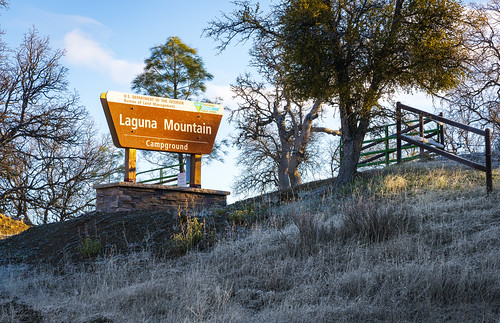
Name and Location: Mount Laguna Recreation Area resides within the Laguna Mountain range spanning 6,000 acres about an hour east of San Diego, just off Interstate 8 and Sunrise Scenic Byway.
History and Significance: Surrounded by Cleveland National Forest and peaking at over 6,000 feet, pine-blanketed hiking trails, campgrounds and rustic lodges allow visitors to enjoy alpine scenery less than 50 miles from the coast on Mt. Laguna.
What to Expect: Outdoor enthusiasts traverse hiking trails taking in panoramic vistas of mountains, forests and desert, go horseback riding to remote meadows or stay overnight in secluded lodges near trailheads accessing the Pacific Crest Trail.
Visitor Information: The recreation area is open year-round for a $5 parking fee needed to access trails and facilities. Some campgrounds are seasonal. General store stocks supplies to support hikers and campers.
Nestled in the high country of Cleveland National Forest, Mount Laguna offers close-to-town alpine scenery and outdoor recreation. Conifer forests filled with Jeffrey pine and incense cedar perfume the air up here at 6,000 ft elevation. Hikers can set off on trails ranging from easy nature walks around picturesque Lake Cuyumaca to testing multi-day backpacking routes. In winter, Mount Laguna is transformed by snow capped vistas and the opportunity for sledding and snowshoeing. Come summer, have a picnic by the lake or set up camp to gaze upwards at countless glittering stars in Laguna’s International Dark Sky region. Just 40 miles east of San Diego, Laguna’s clean air, mountain beauty and outdoor escapes feel a world apart.

